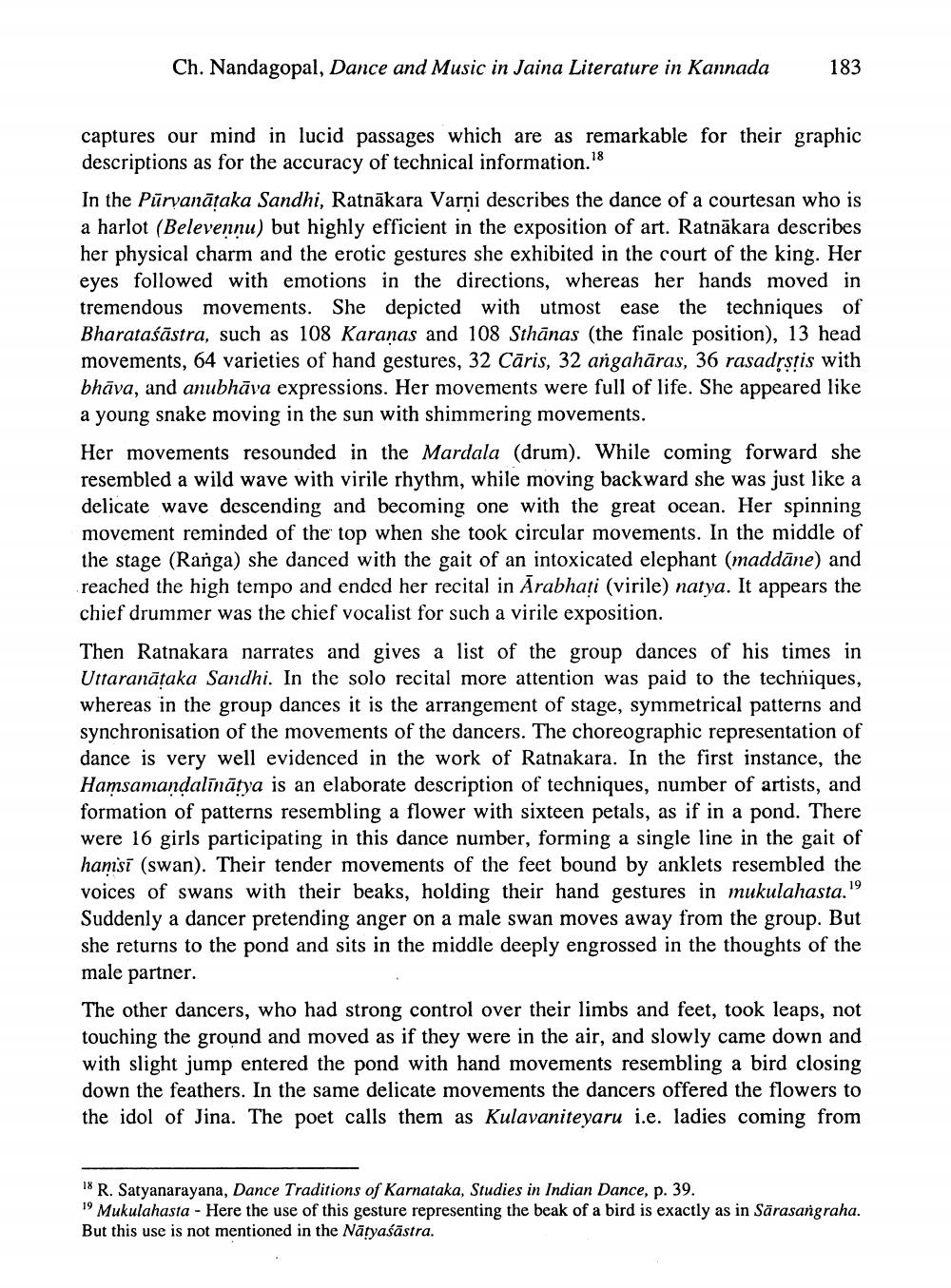________________
Ch. Nandagopal, Dance and Music in Jaina Literature in Kannada
183
captures our mind in lucid passages which are as remarkable for their graphic descriptions as for the accuracy of technical information. In the Pūrvanātaka Sandhi, Ratnākara Varni describes the dance of a courtesan who is a harlot (Belevennu) but highly efficient in the exposition of art. Ratnākara describes her physical charm and the erotic gestures she exhibited in the court of the king. Her eyes followed with emotions in the directions, whereas her hands moved in tremendous movements. She depicted with utmost ease the techniques of Bharataśāstra, such as 108 Karanas and 108 Sthānas (the finale position), 13 head movements, 64 varieties of hand gestures, 32 Cāris, 32 angahāras, 36 rasadsstis with bhāva, and anubhāva expressions. Her movements were full of life. She appeared like a young snake moving in the sun with shimmering movements. Her movements resounded in the Mardala (drum). While coming forward she resembled a wild wave with virile rhythm, while moving backward she was just like a delicate wave descending and becoming one with the great ocean. Her spinning movement reminded of the top when she took circular movements. In the middle of the stage (Ranga) she danced with the gait of an intoxicated elephant (maddāne) and reached the high tempo and ended her recital in Ārabhati (virile) natya. It appears the chief drummer was the chief vocalist for such a virile exposition. Then Ratnakara narrates and gives a list of the group dances of his times in Uttaranātaka Sandhi. In the solo recital more attention was paid to the techniques, whereas in the group dances it is the arrangement of stage, symmetrical patterns and synchronisation of the movements of the dancers. The choreographic representation of dance is very well evidenced in the work of Ratnakara. In the first instance, the Hamsamandalīnātya is an elaborate description of techniques, number of artists, and formation of patterns resembling a flower with sixteen petals, as if in a pond. There were 16 girls participating in this dance number, forming a single line in the gait of hansi (swan). Their tender movements of the feet bound by anklets resembled the voices of swans with their beaks, holding their hand gestures in mukulahasta."
ancer pretending anger on a male swan moves away from the group. But she returns to the pond and sits in the middle deeply engrossed in the thoughts of the male partner. The other dancers, who had strong control over their limbs and feet, took leaps, not touching the ground and moved as if they were in the air, and slowly came down and with slight jump entered the pond with hand movements resembling a bird closing down the feathers. In the same delicate movements the dancers offered the flowers to the idol of Jina. The poet calls them as Kulavaniteyaru i.e. ladies coming from
18 R. Satyanarayana, Dance Traditions of Karnataka, Studies in Indian Dance, p. 39. 19 Mukulahasta - Here the use of this gesture representing the beak of a bird is exactly as in Sārasangraha. But this use is not mentioned in the Nātyaśāstra.




